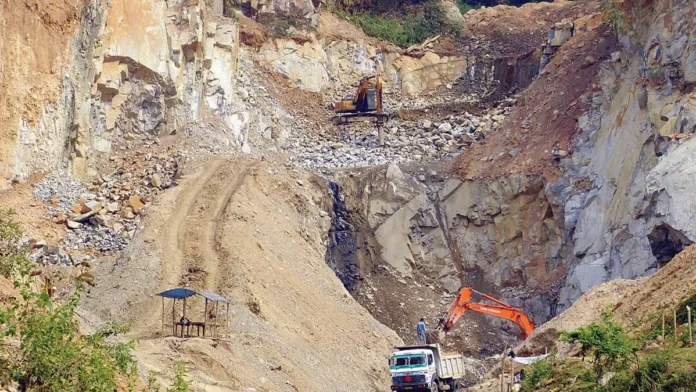Residents of Bamunigaon in Assam have rallied against the proposed establishment of a stone quarry in the Milmilia Reserved Forest, specifically in the Ecchcheliya Hill area. The move has ignited fierce opposition due to concerns over environmental degradation and the destruction of the region’s natural beauty. Ecchcheliya Hill, known for its lush greenery, vibrant wildlife, and scenic views, has long been a part of the community’s heritage. Its potential destruction for commercial gain has prompted local residents and environmentalists to speak out against the proposal.
The Milmilia Reserved Forest, located in the heart of Assam, holds immense ecological value. The area is home to diverse flora and fauna, many of which are integral to the local ecosystem. For years, it has been a sanctuary for wildlife and a source of livelihood for the local people. The proposed quarry is situated on a portion of the hill, an area that has been preserved for its ecological significance. The hill has not only been a natural resource for local communities but also a popular tourist attraction due to its tranquil atmosphere and scenic beauty. With the threat of the stone quarry looming, residents of Bamunigaon are raising their voices against the plan.
Local leaders have expressed their concerns about the long-term consequences of quarrying in this area. The removal of stones and minerals could lead to significant land degradation, deforestation, and loss of biodiversity. The potential destruction of the natural habitat of several species, including some that are already threatened, has caused alarm among environmentalists. They fear that the ecological balance of the region, which has been maintained for generations, could be irreversibly harmed.
For the residents of Bamunigaon, the hill is more than just a landscape feature; it represents a crucial part of their identity and way of life. The hill provides essential resources such as timber, medicinal plants, and fresh water, which local communities rely on. Additionally, the area’s fertile soil supports agriculture, contributing to the local economy. Many people fear that the quarry would disrupt these vital resources, making it difficult for them to sustain their livelihoods.
Furthermore, local fishermen and farmers have voiced concerns over the environmental impact that a stone quarry could have on nearby rivers and agricultural lands. Quarrying often involves the removal of large amounts of earth, which can lead to soil erosion and disrupt the water table. Such changes could result in flooding or droughts, affecting both the natural environment and the agricultural productivity that the community depends on.
The potential destruction of the Milmilia Reserved Forest also raises questions about the balance between economic development and environmental conservation. On one hand, proponents of the quarry argue that the project would provide jobs and stimulate the local economy by extracting valuable stone for construction. They believe that the quarry would provide immediate financial benefits for the area, which could improve infrastructure and raise living standards for the people. However, critics counter that the short-term economic gains are not worth the long-term ecological damage that the quarry could cause.
As the debate intensifies, Bamunigaon residents have taken to the streets, organizing protests and petitions to voice their opposition to the quarry proposal. They have called for greater governmental oversight and transparency in the approval process for such projects. Activists have also urged the Assam government to consider sustainable alternatives to quarrying that would preserve the environment while also supporting economic growth.
The issue of commercial exploitation versus conservation is not unique to Bamunigaon but is part of a broader debate happening across India, where rapid industrialization often comes at the expense of the environment. The outcome of this proposed stone quarry could set a precedent for how such conflicts are handled in the future.
As of now, the government has yet to make a final decision on the quarry proposal. The residents of Bamunigaon remain steadfast in their opposition, hoping that their voices will be heard and that the government will prioritize the long-term health of the environment over short-term economic interests. For them, the preservation of Ecchcheliya Hill is not just about protecting nature, but about safeguarding their cultural heritage and ensuring the sustainability of their way of life for future generations.




